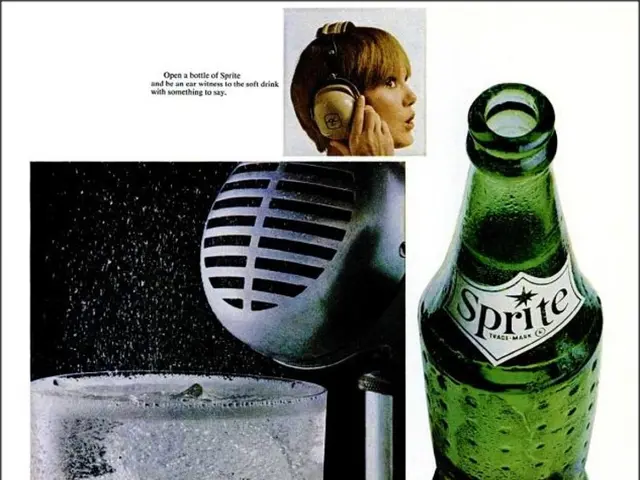extensively detailed guide on male breast development, or Gynecomastia, explaining its causes, treatment options, and impacts on daily life
Gynecomastia, a common condition affecting men, is characterised by the growth of breast tissue. This article explores the common causes, symptoms, and treatment options for this condition.
Gynecomastia is primarily caused by hormonal imbalances, particularly fluctuations between estrogen and testosterone levels. Low testosterone combined with high estrogen can lead to the growth of breast tissue in males[1][2][3].
Besides hormonal imbalances, other common causes include puberty-related hormonal changes, obesity, medications, substance use, underlying health conditions, heredity, and lifestyle factors like alcohol consumption and smoking[1][2][3].
During puberty, gynecomastia often appears due to natural hormonal shifts and may resolve on its own[1][2]. Excess fat can increase estrogen production, contributing to breast enlargement[1][3]. Various drugs linked to gynecomastia include antidepressants, anti-anxiety medications, antibiotics, chemotherapy agents, heart disease drugs, anti-androgens, proton pump inhibitors, HIV/AIDS treatments, and some antihypertensives[1][2][3]. Substance use such as alcohol, anabolic steroids, marijuana, heroin, amphetamines, and narcotics can also induce gynecomastia[1][2][3].
Underlying health conditions like liver and kidney disease, hyperthyroidism, tumors, and other endocrine disorders can cause gynecomastia[1][3]. Heredity may also play a role in some cases[1]. Hormone-like effects from herbal supplements or certain foods may contribute, though evidence is less definitive[3][5].
Symptoms of gynecomastia typically include breast enlargement, which may be unilateral or bilateral, sometimes accompanied by breast pain, tenderness, or nipple sensitivity. However, many men experience no discomfort[4].
To manage gynecomastia, it is crucial to address the underlying causes. The initial step in treating gynecomastia is to check out any medicines contributing to the disorder[1]. Stopping the use of steroids, hormone pills, and other recreational drugs is a pre-surgery requirement for patients[1]. Limiting alcohol consumption, reducing sugar intake, and giving up smoking completely are also necessary pre-surgery lifestyle changes[1].
For patients considering surgery, selecting a qualified plastic surgeon with board certifications and experience in male breast reduction surgery is crucial[6]. Dr. Rajat Gupta, a board-certified plastic surgeon in India with 13 years of experience, offers Gynecomastia treatment with a focus on scar-free results[6].
It is advisable for Gynecomastia patients to make arrangements for a friend or family member to drive them home after the surgery. For appointments, patients can call 91-9251711711 or email contact@our website[6].
It's important to note that breast abscesses and male breast cancer are other issues that may result in swollen male breasts, but they are uncommon[1]. A multi-professional team that includes a nurse practitioner and pharmacist is the most effective at treating Gynecomastia[7].
In conclusion, understanding the causes and symptoms of gynecomastia is essential for effective treatment. While hormonal imbalances are the primary cause, lifestyle factors, medications, and underlying health conditions can also play a role. Seeking professional advice and making necessary lifestyle changes can help manage this condition effectively.
References: [1] Mayo Clinic. (2021). Gynecomastia. https://www.mayoclinic.org/diseases-conditions/gynecomastia/symptoms-causes/syc-20355470 [2] American Cancer Society. (2021). Gynecomastia. https://www.cancer.org/cancer/gynecomastia.html [3] Cleveland Clinic. (2021). Gynecomastia. https://my.clevelandclinic.org/health/diseases/17066-gynecomastia [4] National Health Service. (2021). Gynecomastia. https://www.nhs.uk/conditions/gynecomastia/ [5] Harvard Health Publishing. (2021). Gynecomastia. https://www.health.harvard.edu/mens-health/gynecomastia [6] Dr. Rajat Gupta. (2021). Gynecomastia Treatment. https://www.drrajatgupta.com/treatments/gynecomastia-treatment.html [7] American Society of Plastic Surgeons. (2021). Gynecomastia. https://www.plasticsurgery.org/cosmetic-procedures/gynecomastia-male-breast-reduction/gynecomastia-surgery-recovery
- Gynecomastia, a common condition in men that causes breast tissue growth, can be caused by hormonal imbalances, particularly fluctuations between estrogen and testosterone levels.
- Besides hormonal imbalances, other common causes of gynecomastia include puberty-related hormonal changes, obesity, certain medications, substance use, underlying health conditions, heredity, and lifestyle factors such as alcohol consumption and smoking.
- For patients considering cosmetic surgery for gynecomastia, it's crucial to select a qualified plastic surgeon with board certifications and experience in male breast reduction surgery.
- In addition to professional treatment, lifestyle changes such as limiting alcohol consumption, reducing sugar intake, and quitting smoking are necessary pre-surgery requirements for patients.
- It's important to note that breast abscesses and male breast cancer are other issues that may cause swollen male breasts, but they are uncommon compared to gynecomastia.
- In the arena of health-and-wellness, mental health, mens-health, and medical-conditions like chronic diseases, understanding the causes and symptoms of gynecomastia is essential for effective treatment. It's advisable to seek professional advice and make necessary lifestyle changes to manage this condition.




